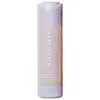What's inside
What's inside
 Key Ingredients
Key Ingredients

 Benefits
Benefits

 Concerns
Concerns

 Ingredients Side-by-side
Ingredients Side-by-side

Helianthus Annuus Seed Oil
EmollientCarthamus Tinctorius Seed Oil
MaskingGlycine Soja Oil
EmollientOctyldodecanol
EmollientButyrospermum Parkii Butter
Skin ConditioningPEG-20 Glyceryl Triisostearate
EmollientBis-Diglyceryl Polyacyladipate-2
EmollientHydrogenated Castor Oil
EmollientTrihydroxystearin
Skin ConditioningDisteardimonium Hectorite
StabilisingAdansonia Digitata Seed Oil
EmollientCitrullus Lanatus Seed Oil
EmollientSambucus Nigra Seed Oil
Cucumis Sativus Seed Oil
EmollientAvena Sativa Kernel Oil
Skin ConditioningTocopherol
AntioxidantRosmarinus Officinalis Leaf Extract
AntimicrobialWater
Skin ConditioningPropylene Carbonate
SolventPhenoxyethanol
PreservativeParfum
MaskingLimonene
PerfumingLinalool
PerfumingHelianthus Annuus Seed Oil, Carthamus Tinctorius Seed Oil, Glycine Soja Oil, Octyldodecanol, Butyrospermum Parkii Butter, PEG-20 Glyceryl Triisostearate, Bis-Diglyceryl Polyacyladipate-2, Hydrogenated Castor Oil, Trihydroxystearin, Disteardimonium Hectorite, Adansonia Digitata Seed Oil, Citrullus Lanatus Seed Oil, Sambucus Nigra Seed Oil, Cucumis Sativus Seed Oil, Avena Sativa Kernel Oil, Tocopherol, Rosmarinus Officinalis Leaf Extract, Water, Propylene Carbonate, Phenoxyethanol, Parfum, Limonene, Linalool
Water
Skin ConditioningGlycerin
HumectantCaprylyl/Capryl Glucoside
CleansingHydroxyethyl Acrylate/Sodium Acryloyldimethyl Taurate Copolymer
Emulsion StabilisingPanthenol
Skin ConditioningTocopherol
AntioxidantChamomilla Recutita Flower Extract
MaskingRosa Centifolia Flower Extract
AstringentLavandula Angustifolia Oil
MaskingHelianthus Annuus Seed Oil
EmollientGlycine Soja Oil
EmollientAllantoin
Skin ConditioningSodium Cocoyl Apple Amino Acids
Skin ConditioningSodium Lauroyl Oat Amino Acids
CleansingShea Butter Ethyl Esters
EmollientXylitylglucoside
HumectantAnhydroxylitol
HumectantXylitol
HumectantPropanediol
SolventAcacia Senegal Gum
MaskingXanthan Gum
EmulsifyingShea Butteramidopropyl Betaine
CleansingSodium Phytate
Hexylene Glycol
EmulsifyingCaprylic/Capric Triglyceride
MaskingSorbitan Isostearate
EmulsifyingPolysorbate 60
EmulsifyingIsohexadecane
EmollientTetrasodium EDTA
Phenoxyethanol
PreservativeEthylhexylglycerin
Skin ConditioningBenzoic Acid
MaskingSodium Citrate
BufferingCitric Acid
BufferingLinalool
PerfumingWater, Glycerin, Caprylyl/Capryl Glucoside, Hydroxyethyl Acrylate/Sodium Acryloyldimethyl Taurate Copolymer, Panthenol, Tocopherol, Chamomilla Recutita Flower Extract, Rosa Centifolia Flower Extract, Lavandula Angustifolia Oil, Helianthus Annuus Seed Oil, Glycine Soja Oil, Allantoin, Sodium Cocoyl Apple Amino Acids, Sodium Lauroyl Oat Amino Acids, Shea Butter Ethyl Esters, Xylitylglucoside, Anhydroxylitol, Xylitol, Propanediol, Acacia Senegal Gum, Xanthan Gum, Shea Butteramidopropyl Betaine, Sodium Phytate, Hexylene Glycol, Caprylic/Capric Triglyceride, Sorbitan Isostearate, Polysorbate 60, Isohexadecane, Tetrasodium EDTA, Phenoxyethanol, Ethylhexylglycerin, Benzoic Acid, Sodium Citrate, Citric Acid, Linalool
Ingredients Explained
These ingredients are found in both products.
Ingredients higher up in an ingredient list are typically present in a larger amount.
Glycine Soja Oil comes from the soybean. Glycine Soja is native to eastern Asia.
Soybean oil is an emollient. It is rich in antioxidants and fatty acids including palmitic, stearic, oleic, and linoleic acids.
As an emollient, the fatty acids in soybean oil helps keep your skin soft and hydrated. It does so by creating a film on top that traps moisture in.
Soybean oil is also rich in vitamin E, a potent antioxidant. Vitamin E is also anti-inflammatory and provides a soothing effect.
Studies show soy may help fade hyperpigmentation from UVB. It does so by disrupting the melanin process from UVB induced skin inflammation.
This ingredient may not be malassezia folliculitis, or fungal-acne, safe.
Soybeans are rich in proteins and are part of the legume family. Foods made with soybeans include tofu, soymilk, edamame, miso, and soy sauce.
Learn more about Glycine Soja OilHelianthus Annuus Seed Oil is the oil derived from the seeds of a Sunflower. Sunflower seed oil is non-fragrant. It is an emollient, meaning it helps to soften the skin.
Sunflower seed oil contains many fatty acids. The fatty acids found in sunflower seeds include (from highest amount to least): linoleic acid, myristic acid, palmitic acid, stearic acid, arachidic acid, oleic acid, and linolenic acid.
These fatty acids help the skin create ceramides. Ceramides play a role in repairing the skin barrier.
Helianthus Annuus Seed Oil helps moisturize the skin. This in turn helps the skin look more rejuvenated and smoother.
Sunflowers are rich in vitamin E.
Historians believe Indigenous cultures of North America domesticated sunflowers before corn. Thus they relied on sunflower oil for a variety of uses. One such use is moisturizing skin and hair.
Sunflower seed oil may not be fungal acne safe. We recommend speaking with a professional if you have any concerns.
Learn more about Helianthus Annuus Seed OilLinalool is a fragrance and helps add scent to products. It's derived from common plants such as cinnamon, mint, citrus, and lavender.
Like Limonene, this ingredient oxidizes when exposed to air. Oxidized linalool can cause allergies and skin sensitivity.
This ingredient has a scent that is floral, spicy tropical, and citrus-like.
Learn more about LinaloolPhenoxyethanol is a preservative that has germicide, antimicrobial, and aromatic properties. Studies show that phenoxyethanol can prevent microbial growth. By itself, it has a scent that is similar to that of a rose.
It's often used in formulations along with Caprylyl Glycol to preserve the shelf life of products.
Tocopherol (also known as Vitamin E) is a common antioxidant used to help protect the skin from free-radicals and strengthen the skin barrier. It's also fat soluble - this means our skin is great at absorbing it.
Vitamin E also helps keep your natural skin lipids healthy. Your lipid skin barrier naturally consists of lipids, ceramides, and fatty acids. Vitamin E offers extra protection for your skin’s lipid barrier, keeping your skin healthy and nourished.
Another benefit is a bit of UV protection. Vitamin E helps reduce the damage caused by UVB rays. (It should not replace your sunscreen). Combining it with Vitamin C can decrease sunburned cells and hyperpigmentation after UV exposure.
You might have noticed Vitamin E + C often paired together. This is because it is great at stabilizing Vitamin C. Using the two together helps increase the effectiveness of both ingredients.
There are often claims that Vitamin E can reduce/prevent scarring, but these claims haven't been confirmed by scientific research.
Learn more about TocopherolWater. It's the most common cosmetic ingredient of all. You'll usually see it at the top of ingredient lists, meaning that it makes up the largest part of the product.
So why is it so popular? Water most often acts as a solvent - this means that it helps dissolve other ingredients into the formulation.
You'll also recognize water as that liquid we all need to stay alive. If you see this, drink a glass of water. Stay hydrated!
Learn more about Water